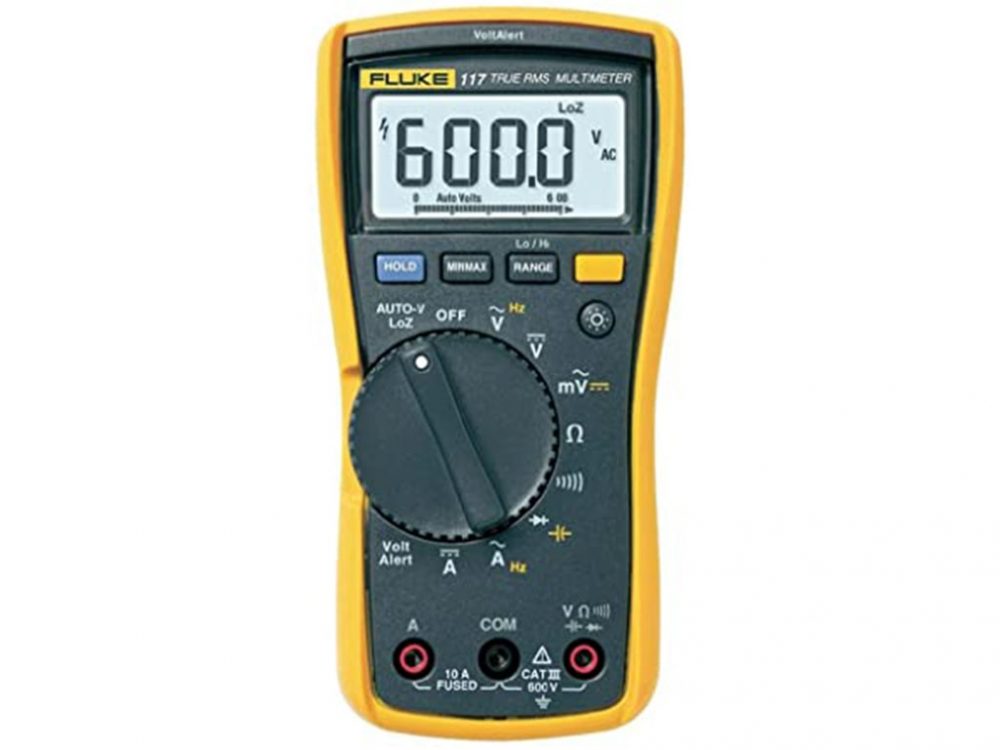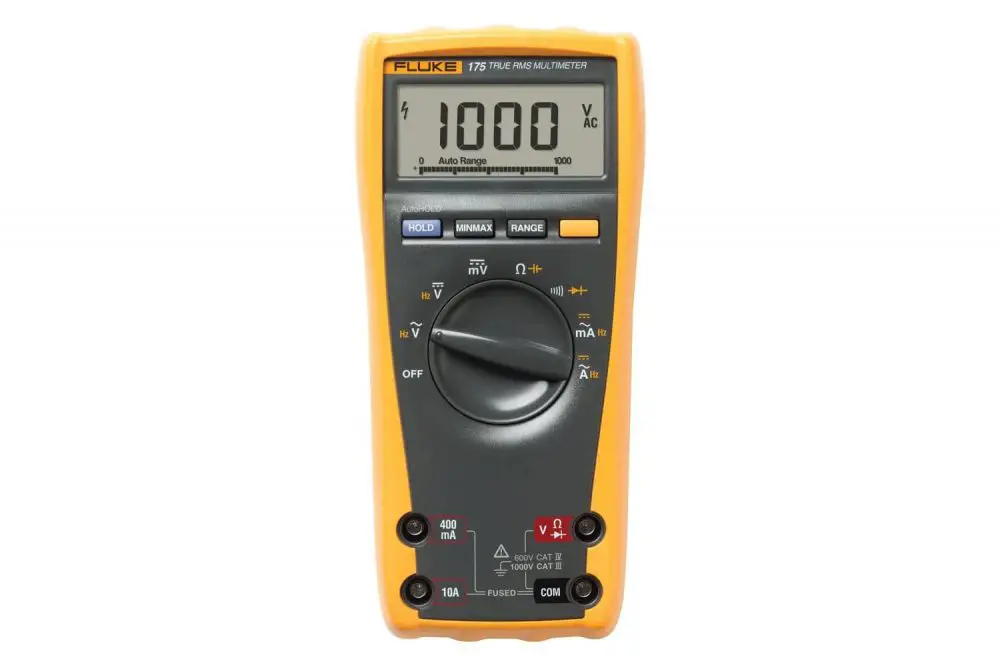Fluke 117 VS Fluke 175 clamp meter comparison
There are many different multimeters on the market, so finding the right one is simple. However, the Fluke 117 and 175 are two models that stand out. Both of these models are extremely accurate and reliable, but there are some key differences to be aware of before making your final decision.
We’ve put together a quick comparison of the Fluke 117 and 175 to help you decide which is right for you. Continue reading to learn more about each model’s main features and how well it works, so you can choose the best one for you.
Comparison Table Fluke 117 vs Fluke 175
Key Differences:
The main difference between Fluke 117 and Fluke 175 is that both are high-quality multimeters that are accurate and dependable. The price and screen size are the primary distinctions between these two models. Because its LCD screen is larger and has a backlight, the Fluke 117 is typically more expensive than the Fluke 175. The Fluke 175, on the other hand, has some extra features that the Fluke 117 does not. The Fluke 175 is a good option if you want to spend the least amount of money. If you’re willing to spend a little more money, the Fluke 117, which has a larger screen and more features, might be a better choice.
- The most obvious difference between the Fluke 117 and 175 is their respective display sizes. The Fluke 117 has a large, backlit LCD display that is easy to read even in low-light conditions. The Fluke 175, on the other hand, has a smaller display that may be more difficult to read in some situations.
- Another key difference between these two models is their price. The Fluke 117 is typically more expensive than the Fluke 175, though the price difference is not usually significant.
- Fluke 117 has a few additional features that the Fluke 175 does not offer, such as Min/Max/Average readings and an auto power-off function. These additional features may or may not be important to you, but they are something to keep in mind when making your final decision.
1. Performance
In terms of performance, both the Fluke 117 and 175 are highly accurate and reliable multimeters. They both have a basic accuracy of 0.5%, and they can measure AC/DC voltage, AC/DC current, resistance, continuity, and capacitance with ease.
The main difference in performance is the display size. As we mentioned earlier, the Fluke 117 has a large, backlit LCD display that is easy to read even in low-light conditions. The Fluke 175 has a smaller display that may be more difficult to read in some situations.
2. Ease of Use
Both the Fluke 117 and 175 are relatively easy to use, though the Fluke 117 may be slightly easier to use thanks to its larger display. The Fluke 175 does have a few additional features that the Fluke 117 doesn’t offer, but these features are generally easy to understand and use.
3. Price
The Fluke 117 is typically more expensive than the Fluke 175, though the price difference is not usually significant. If you’re looking for the most affordable option, the Fluke 175 is a good choice. However, if you’re willing to spend a bit more for a multimeter with a large display and additional features, the Fluke 117 may be a better option for you.
Fluke 117 vs Fluke 175 multimeter review:
Fluke 117 Digital Multimeter:
If you need a reliable and accurate digital multimeter, the Fluke 117 is an excellent choice. It’s easy to use and comes with everything you need to find electrical problems and fix them. It’s also made by Fluke, which is known for its quality and durability.
It is a true-RMS digital multimeter (DMM) that gives accurate readings even when there is a lot of noise around. Its large backlit display is easy to read in any light, and the built-in low battery indicator makes sure you always have enough power to finish the job.
The Fluke 117 multimeter also has a feature called “auto-ranging,” which chooses the right range for the measurement being taken. This keeps you from breaking the meter by accident or getting wrong readings. Even though the Fluke 117 multimeter is a fairly simple DMM, it has all the features you need for most electrical troubleshooting jobs. It’s a great choice for both personal and business use.
Key Features:
1. AutoV/LoZ: To prevent false readings caused by ghost voltage.
2. True RMS: For accurate measurements on complex waveforms.
3. Backlit display: Makes it easy to take readings in low-light conditions.
4. Min/Max/Average: Captures signal fluctuations to help troubleshoot problems.
5. Selectable filter: Smoothes out AC signals for more accurate readings..
6. Manual and auto-ranging: Gives you the flexibility to take measurements how you want.
7. Auto hold: freezes the reading on the display so you can take your time writing it down.
8. Relative mode: This eliminates the need for re-zeroing when taking multiple measurements.
9. Diode test: This allows you to test diodes and transistors.
10. Data logging: Stores up to 99 readings so you can review them later.
Pros:
- A small and rugged multimeter that is perfect for field technicians
- Features a large digital display that is easy to read
- True RMS feature for taking accurate readings on complex signals
Cons:
- Does not come with a carrying case
Fluke 175 True RMS Digital Multimeter
The best choice is the Fluke 175 True RMS Digital Multimeter. This meter is full of features that make it great for a wide range of tasks, such as fixing HVAC/R systems, troubleshooting electrical problems, and more. The Fluke 175 is a true-RMS meter, which means it can measure AC signals accurately even when they aren’t working right. This is an important feature if you will be working with waveforms that are not sinusoidal, which is common in business and industry. The meter also has a big LCD screen with a backlight that makes it easy to read even when there isn’t much light.
It’s also great that the Fluke 175 has a temperature sensor. This can help with HVAC/R repairs because you won’t have to carry around a separate thermometer. The meter also has a “hold” button that makes it easier to read and write down readings by stopping the display.
Overall, the Fluke 175 True RMS Digital Multimeter is a great tool for a wide range of uses. It comes from the well-known Fluke brand and has many features that make it accurate and useful. The Fluke 175 should be at the top of your list if you want a good digital multimeter.
Key Features:
- Fluke Connect compatibility
- Large backlit display
- Auto and manual ranging
- True RMS AC voltage and current for accurate measurements of non-linear signals
- Frequency, capacitance, resistance, continuity and diode test functions
- Min/Max/Average to record signal fluctuations
- Input Alert to warn against wrong input jacks
- CAT III 1000 V / CAT IV 600 V safety rating
- Built-in help menus
- Compact and rugged design for field use
Pros:
- True RMS voltage and current for accurate measurements on non-linear loads
- Built-in USB port for downloading logged data to a PC
- Durable design with reinforced protection against drops and shocks
Cons:
- Insufficient brightness (backlight)
Frequently Asked Questions:
It is an essential tool for electricians, engineers, and technicians. The Fluke 117 is a versatile multimeter that can be used for a variety of tasks. It is commonly used to calculate voltage, current, and resistance.
A multimeter’s “True RMS” setting is used to measure AC voltage or current. The true RMS value of a sine wave is its amplitude divided by the square root of 2. For other waveforms, the root means square (RMS) value is the same as the True RMS value.
The true RMS value is important because it allows you to accurately measure AC voltage or current regardless of how the waveform appears. Most multimeters have an AC mode as well as a DC mode. The AC mode can usually measure both the true RMS value and the average value. In contrast, the DC mode can only measure the average value.
Fluke meters are very accurate and last a long time, which is why they are so expensive. A Fluke meter is the most accurate way to measure electricity. So, Fluke meters are used by professionals who need accurate measurements.
Fluke meters are made with high-quality parts and come with a strong warranty, so you can be sure that your investment will last. Fluke is your best bet if you want a good meter that will last for years without giving you any trouble.
Conclusion:
The Fluke 175 is a true RMS digital multimeter that is perfect for use in industrial and commercial settings. It is rugged and reliable and can measure AC/DC voltage, DC current, resistance, continuity, and diode test functions. The large backlit LCD display is easy to read, even in low light conditions. The auto-ranging feature makes it easy to take accurate measurements, and the built-in holster keeps the meter safe when not in use. The Fluke 117 is a great choice for those who need a reliable and accurate multimeter for their work or business.





![10 Best multimeter for the money – Top Picks & Reviews [2022] best multimeter for the money](https://multimetertools.com/wp-content/uploads/2021/03/best-multimeter-for-the-money-1-1-1-1-1-1.jpg)
